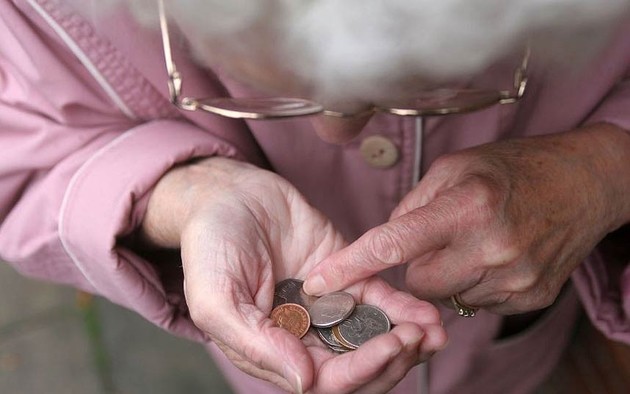Susanna Petrosyan, Yerevan. Specially for Vestnik Kavkaza
2014 was a disaster for the Armenian economy. Financial problems have been added to many unresolved socio-economic ones. At the end of last year, in just a few days the national currency devalued by 10%, its ratio to the US dollar before was 410 drams. Although the Central Bank managed to stop the fall of the dram, due to currency interventions, the tendency of a rising price of the US dollar started to be observed already in early January.
According to official statistics, the economy grew by 3-3.5% over 11 months of 2014, instead of the planned 5.2%. According to the former chairman of the Central Bank, Bagrat Asatryan, this figure is quite acceptable for countries with a normal level of economic development, but in Armenia, with its numerous problems, growth of 3-3.5% will be felt only by very limited stratum of people. "In the economies of countries like Armenia, six percent is the limit after which broad social strata begin to feel the economic growth," says Asatryan.
Moreover, after assessing the economic growth it turns out that the largest share is represented not by the industry, but by services and trade. This correlation perfectly reflects the current situation in the Armenian economy, where production plays an undistinguished role, while imports exceed exports threefold.
Low rates of exports have become one of the most serious problems of the Armenian economy, which some experts already call “sick”. The negative trade balance has an important place in the overall number of characteristics of a “sick” economy, such as lack of a competitive business environment, development of big business at the expense of small and medium-sized business, a once-and-for-all established monopoly setup, and a reduction of the volume of transfers from Russia, so important for Armenia.
According to a National Assembly deputy from the "Prosperous Armenia" faction, Mikael Melkumyan, the presence of serious domestic production could have become the most significant element in ensuring economic security and, consequently, the ability to resist the influence of external factors.
Another central problem of the economy, which, as well as the low level of exports, makes Armenia vulnerable to external challenges, has been a sharp reduction of investments, in fact, their absence. Zero capital inflow suggests problems will not only appear today but also in the future.
According to some experts, the 2014 economic year has been the most difficult in comparison with all the years of independence. Meanwhile, the problems of the past year created a base for a more complicated 2015. Since, in parallel to the slowdown of economic growth, the social situation of the population is also becoming worse. "The situation does not inspire any optimism for 2015 and 2016, as there will not be any growth of transfers from Russia, the situation with investments is deplorable, one can say, they almost do not exist, one may even observe an outflow of capital," said Bagrat Asatryan.
According to the ex-prime minister Hrant Bagratyan, the standard of people's living has fallen sharply, and the country will be able to reach the level of 2013-2014 only by 2017. "Today Armenia lives 30% worse than it lived yesterday, and, from this point of view, already 2015 will be difficult. It seems to everyone that the ratio of the US dollar to the dram will return to 410 drams, but it will not," forecasts Bagratyan.
According to specialists, the rise of the price for the US dollar will lead to an increase of services for gas. For instance, since calculations of "Gazprom-Armenia" are based on the US dollar, which the company uses for purchases of gas abroad, in the case of a rise in price for the US dollar, the gas shall rise in price as well, respectively.
Summing up the results of this year, Prime Minister Hovik Abrahamyan assured that the government has the capacity and experience to ensure that the search for solutions to the problems faced by the country and the people are to be continued in 2015. He also expressed the hope that the government will be able to solve the problem of poverty and to create jobs. However, will the authorities have enough power to change the existing economic situation with monopolies, investment climate and to create real competition in business, to overcome unequal treatment of business representatives by officials and to reduce the so-called "shadow" economy? Since, indeed, the current model, based not on market rules, but on deals and on mutual agreement between businessmen and, in the first place, importers and government officials, has exhausted itself.






